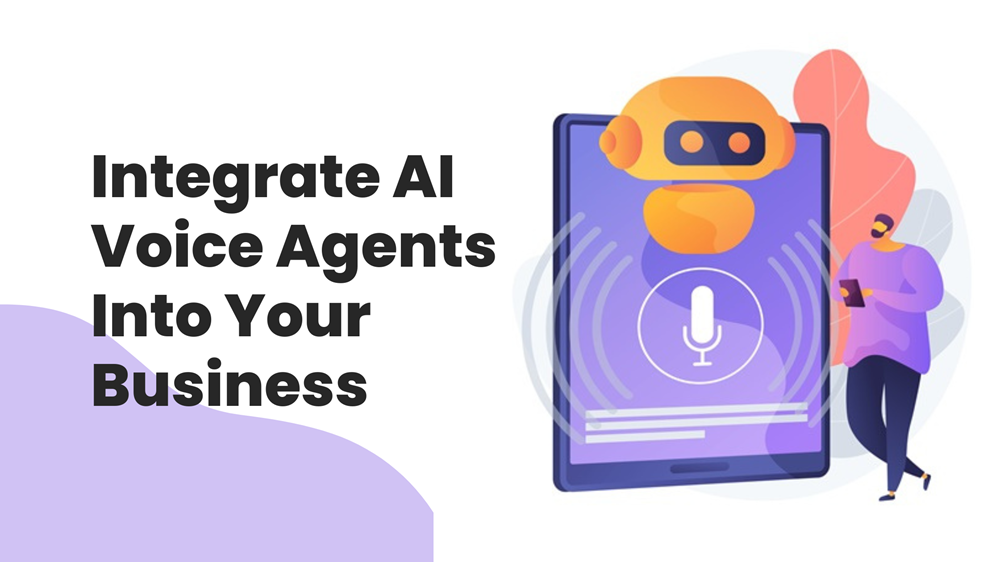The way businesses communicate with customers is changing fast. With AI making major strides in automation, it’s now easier than ever to enhance your phone support using AI voice agent integration. Whether you’re running a clinic, managing property leads, or handling customer service calls, adding an AI-powered voice assistant can take a load off your team and improve caller experience around the clock.
Let’s walk through what AI voice agent integration really involves, how it works, and how you can implement it without disrupting your current phone setup.
What is AI Voice Agent Integration?
AI voice agent integration means connecting an intelligent, voice-powered system to your existing business phone lines or cloud telephony. These agents aren’t like old-school phone bots. They understand what people are saying, speak naturally, and can take real action—like booking an appointment or answering common service questions.
This technology uses:
- Speech recognition to hear what callers say
- Natural language processing (NLP) to understand the intent
- Text-to-speech to respond clearly and contextually
It’s an advanced way to automate phone conversations without frustrating customers.
Why Integrate AI Voice Agents Now?
According to a 2024 Gartner survey, 67% of customer support leaders plan to adopt AI voice assistants to manage rising call volumes while cutting operational costs.
Here are some of the main reasons businesses are turning to AI voice agent integration:
- Handle customer calls after-hours and on weekends
- Reduce wait times and call abandonment
- Automate routine scheduling and information requests
- Scale support without hiring more staff
- Offer consistent, error-free responses
For businesses with high call volumes, like healthcare, property management, auto dealerships, and service-based franchises, a voice agent can become your best-performing team member.
Key Components of a Successful Integration
To set up a working system, you’ll need:
- AI Voice Assistant Platform – Choose a platform like VoAgents.AI that supports multilingual voice understanding, real-time scheduling, and CRM integration.
- Phone System Compatibility – Works with VoIP systems, cloud telephony (like Twilio, RingCentral), or traditional PBX setups.
- Call Routing Logic – Determine when the AI answers vs. when a human takes over.
- CRM or Calendar Connection – For booking, lead capture, and follow-ups.
- Call Monitoring Tools – To track performance, listen to calls, and continuously improve.
AI Phone Assistant Setup: Step-by-Step
Here’s how to get started with your AI phone assistant setup:
1. Define Your Use Cases
Start by listing tasks the AI can handle:
- Booking or canceling appointments
- Answering FAQs
- Collecting caller details for lead generation
- Confirming business hours or directions
This will guide the voice script and routing rules.
2. Choose the Right Voice Agent Solution
Pick an AI voice agent provider that aligns with your industry and offers:
- Easy integration with your current systems
- Custom workflows
- Voice that sounds natural, not robotic
- US-based compliance and data privacy
Pro tip: A platform with pre-built templates can speed up your voice agent implementation.
3. Customize Call Flows
Work with your AI provider to design:
- Greeting scripts
- Keyword recognition (e.g., “book,” “cancel,” “location”)
- Logic for handling multiple questions in one call
4. Connect to Your Phone System
Most integrations are cloud-based and don’t require hardware changes. Your AI partner will route calls through the voice agent using your existing numbers.
5. Test and Launch
Before going live, run test calls and adjust:
- Response timing
- Error handling
- Transfers to live agents when needed
Once ready, launch in stages—start with after-hours calls or one location.
What Makes a Good AI Voice System?
A quality AI voice system should include:
- Conversational accuracy (understands accents, natural speech)
- Speed (no long pauses or delays)
- Scalability (can manage hundreds of calls per hour)
- Integration-ready (works with CRMs like Salesforce or scheduling tools like Calendly)
- Analytics tools to measure success
If you’re looking for the best AI voice assistant, it’s one that adapts to your callers’ language and intent while connecting smoothly with your business tools.
Real-World Applications
Here are some ways businesses are using voice tech today:
- Medical clinics use ai voice agent to schedule follow-ups and confirm appointments.
- Property managers use voice AI for after-hours leasing inquiries.
- Auto repair shops use voice agents to provide status updates and take new service requests.
We cover more examples in our blog on ai voice agent uses.
Common Challenges & How to Avoid Them
Challenge: Lack of clear call flow structure
- Fix: Map out key intents and fallback paths clearly
Challenge: AI sounds robotic or slow
- Fix: Choose a platform that supports neural speech models and low-latency processing
Challenge: Poor integration with CRMs or calendars
- Fix: Work with a vendor who offers pre-built connectors or open APIs
Final Thoughts
AI voice agent integration is no longer just for big enterprises. With tools like VoAgents.AI, small and midsize businesses can now implement high-quality voice automation quickly and affordably.
If you’re looking to streamline your phone operations, reduce manual workload, and give your callers a smoother experience, now is the time to invest in an AI voice assistant.
Ready to explore options? Reach out to our team for a personalized demo and setup guide.
Don’t forget to read our other articles on the best AI voice assistant options and how businesses are unlocking value through ai voice agent technology.




